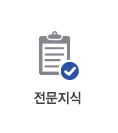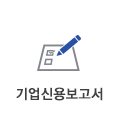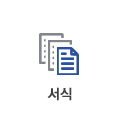목차
없음
본문내용
of thought and action: a social cognitive theory. Englewood Cliffs, NJ: Prentice-Hall.
Bandura, A., & Zimmerman, B. J. (1994). Impact of self-regulatory influences on writing course attainment. American educational research journal, 31(4), 845-862.
Bodgdan, R. C., & Biklen, S. K. (1982). Qualitative research for education: An introduction to theory and methods. Boston, MA: Allyn & Bacon.
Daly, J. A., & Stafford, L. (1984). Correlates and consequences of social communicative anxiety. In J. A. Daly & J. C. MacCroskey(eds.) Avoiding communication(125-144). London: Sage Publication.
Du Toit. P. H. (1990). Microteaching as meta-learning opportunity for lectures in teaching. Dissertation abstracts international, 51(6), 1920.
Lincoln, Y. S., & Guba, E. G. (1985). Naturalistic inquiry. Newbury Park, CA: Sage Publications.
MacLeod, G. R., & McIntyre, D. I. (1977). Toward a model for microteaching. In McIntyre, D. I.., MacLeod, G. R.., & Griffiths, R.(eds.). Investigations of microteaching. London: Croom Helm.
McGarvey, B., & Swallow, D. (1986). Microteaching in teacher education and training. Dover, NH: Croom Helm.
Murphy, P. K., Delli, L. A. M., & Edwards, M. N. (2004). The good teacher and good teaching: Comparing beliefs of second-grade students, preservice teachers, and inservice teachers. The journal of experimental education, 72(2), 69-92.
Perlberg, A. (1989). Conceptual and theoretical bases of microteaching. In Eraut, M..(ed.). The international encyclopedia of educational technology. Oxford: Pergamon.
Rogers, S. F., & Tucker, B. H. (1993). Video portfolios: Collaboration in literacy teaching assessment. (ERIC Document Reproduction Service NO. ED 364879).
Schn, D. (1983). The reflective practitioner: how professionals think in action. NY: Basic Books.
Wallace, S. T., & Alden, L. E. (1995). Social anxiety and standard following social success and failure. Cognitive therapy and research, 19, 613-631.
The Change of Self Efficacy of Preservice Early Childhood Teacher using Microteaching
Kim, Sung Jae
The purpose of this study was to analyze the effect and change of self efficacy of preservice early childhood teacher based on microteaching. In this study, the participants were 36 early childhood education majors at a college. The quantitative date were collected from an self efficacy scale, interviews with ten of the 36 students and from their reflective journals. The statistical results show that microteaching method is effective in improving preservice early childhood teacher\'s self efficacy. Positive results were seen in the following five categories: 1) reflective practice and effort through the video-(re)observation; 2) development of professionalism as a teacher through feedback and evaluation; 3) improving self confidence over speech anxiety through a presenter\'s role; 4) successful experiences of problem solving through the group activity; 5) positive verbal feedback such as a praise and encouragement from colleagues and professor.
Bandura, A., & Zimmerman, B. J. (1994). Impact of self-regulatory influences on writing course attainment. American educational research journal, 31(4), 845-862.
Bodgdan, R. C., & Biklen, S. K. (1982). Qualitative research for education: An introduction to theory and methods. Boston, MA: Allyn & Bacon.
Daly, J. A., & Stafford, L. (1984). Correlates and consequences of social communicative anxiety. In J. A. Daly & J. C. MacCroskey(eds.) Avoiding communication(125-144). London: Sage Publication.
Du Toit. P. H. (1990). Microteaching as meta-learning opportunity for lectures in teaching. Dissertation abstracts international, 51(6), 1920.
Lincoln, Y. S., & Guba, E. G. (1985). Naturalistic inquiry. Newbury Park, CA: Sage Publications.
MacLeod, G. R., & McIntyre, D. I. (1977). Toward a model for microteaching. In McIntyre, D. I.., MacLeod, G. R.., & Griffiths, R.(eds.). Investigations of microteaching. London: Croom Helm.
McGarvey, B., & Swallow, D. (1986). Microteaching in teacher education and training. Dover, NH: Croom Helm.
Murphy, P. K., Delli, L. A. M., & Edwards, M. N. (2004). The good teacher and good teaching: Comparing beliefs of second-grade students, preservice teachers, and inservice teachers. The journal of experimental education, 72(2), 69-92.
Perlberg, A. (1989). Conceptual and theoretical bases of microteaching. In Eraut, M..(ed.). The international encyclopedia of educational technology. Oxford: Pergamon.
Rogers, S. F., & Tucker, B. H. (1993). Video portfolios: Collaboration in literacy teaching assessment. (ERIC Document Reproduction Service NO. ED 364879).
Schn, D. (1983). The reflective practitioner: how professionals think in action. NY: Basic Books.
Wallace, S. T., & Alden, L. E. (1995). Social anxiety and standard following social success and failure. Cognitive therapy and research, 19, 613-631.
The Change of Self Efficacy of Preservice Early Childhood Teacher using Microteaching
Kim, Sung Jae
The purpose of this study was to analyze the effect and change of self efficacy of preservice early childhood teacher based on microteaching. In this study, the participants were 36 early childhood education majors at a college. The quantitative date were collected from an self efficacy scale, interviews with ten of the 36 students and from their reflective journals. The statistical results show that microteaching method is effective in improving preservice early childhood teacher\'s self efficacy. Positive results were seen in the following five categories: 1) reflective practice and effort through the video-(re)observation; 2) development of professionalism as a teacher through feedback and evaluation; 3) improving self confidence over speech anxiety through a presenter\'s role; 4) successful experiences of problem solving through the group activity; 5) positive verbal feedback such as a praise and encouragement from colleagues and professor.













































소개글